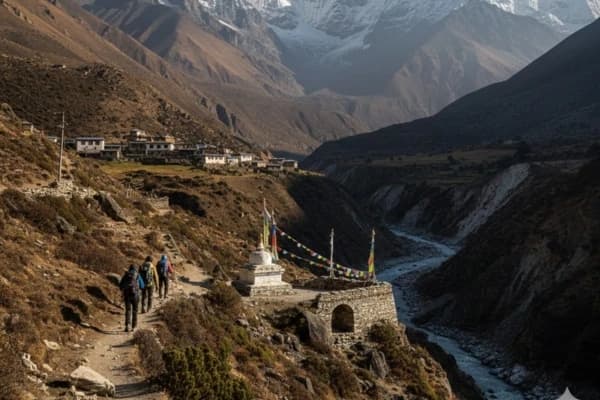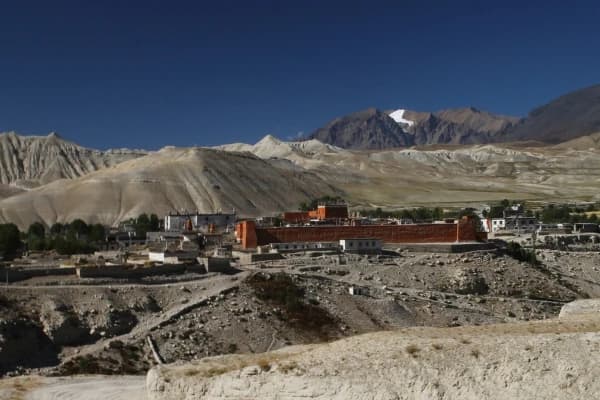The Tihar festival in Nepal is one of the most vibrant celebrations of the year. Known as the festival of lights and flowers in Nepal. Tihar is a five-day Hindu festival that honors animals, celebrates the bond between brothers and sisters, and worships Goddess Laxmi, the goddess of wealth and prosperity. In 2025, the festival will once again light up homes, streets, and villages across the country with diyos (oil lamps), marigolds, and colorful rangoli patterns.
Tihar is also known as Deepawali or Yamapanchak, and is celebrated for five days throughout Nepal. Unlike many festivals that focus on a single deity or ritual, Tihar embraces animals, humans, and gods together. Crows, dogs, cows, oxen, and bulls are honored alongside rituals for Goddess Laxmi, Govardhan hill, and the unique Bhai Tika ceremony between brothers and sisters.
This festival is both spiritual and social, blending mythology, traditions, music, dance, and delicious food into one of Nepal’s biggest annual events alongside Dashain.
If you are planning to travel to Nepal, visiting during the time of Tihar is one of the most immersive ways to understand the country’s culture.
Mythological Story and Legends
Almost every big Hindu festival has some kind of story behind it, and Tihar is no different. It actually comes from really old legends that go back hundreds of years. These stories explain why people do all the different rituals and why Tihar is such a meaningful and special festival.
Legends of Yama Panchak
Tihar is also known as Yama Panchak because it’s linked to Yama, the god of death, and his sister Yamuna. The story goes that Yamuna once invited her brother Yama over and did some special rituals to honor him. Yama was super happy with what she did, so he promised that brothers and sisters who repeat the same ritual during Tihar would live a long life and be safe from dying too soon. That’s basically how the Bhai Tika tradition started.
Goddess Laxmi and Lord Krishna
On the third day, people celebrate Gai Tihar and Laxmi Puja, which is about Goddess Laxmi. Families make their houses super clean and decorate them with marigold flowers, tiny oil lamps, and colorful rangoli designs to welcome good luck and wealth.
There’s also another story linked to Tihar about Lord Krishna. The stories foretold the feats of Lord Krishna lifting up a whole mountain called Govardhan to save villagers from Indra, the rain god, who was mad at them. The fourth day, called Govardhan Puja, is basically a way of saying thanks for that protection.
Interesting Facts Related to Yama Panchak
- Tihar is celebrated not just in Nepal but also among Nepali communities living abroad.
- The five days stand for harmony between nature, family, and the gods.
- Crows, dogs, and cows are worshipped as messengers and companions of the gods.
Social and Cultural Importance of Tihar in Nepal
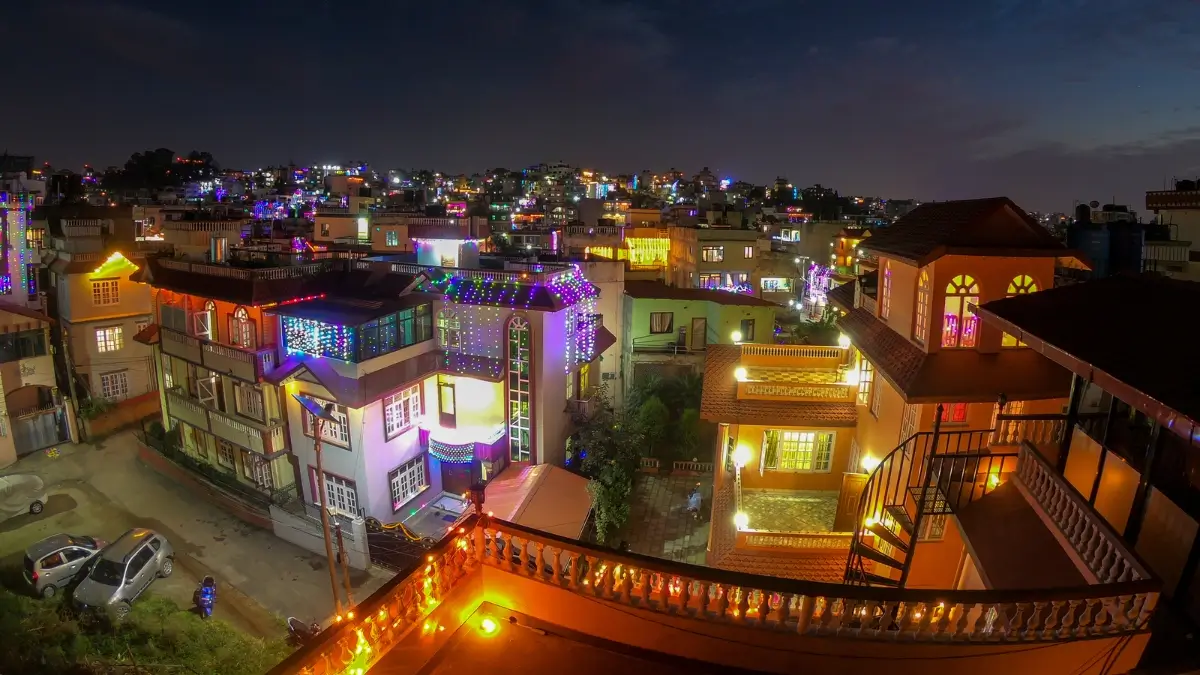
Even though Tihar comes from old myths, what makes it really awesome is how it brings families and communities together. It mixes spiritual stuff with hanging out and celebrating with people, which is why it’s one of the most special festivals in Nepal.
Strengthening Family Bonds
One of the most heartfelt parts of Tihar is Bhai Tika. On the fifth day, sisters put a special seven-colored tika on their brothers’ foreheads and give them sweets. Wishing them a long and happy life. Brothers, in return, give gifts and promise to protect their sisters.
Community Celebrations
Tihar is also super famous for bringing people together. Groups of young people go around singing Deusi Bhailo songs, playing instruments like the madal and harmonium, and doing traditional dances. In lots of villages, these performances go on until midnight, and families welcome the singers and dancers with yummy treats like sel roti, fruits, and sweets.
Scientific Aspects
- Many Tihar rituals also have practical and agricultural meanings.
- Feeding crows shows respect for nature’s messengers.
- Decorating dogs is a way to honor their loyalty and protection.
- Worshipping cows and the ox highlights how important they are for milk and farming in Nepal.
- Celebrating after the harvest means families have lots of food and flowers to enjoy the festival.
Tihar 2025 Dates and Timing
Tihar follows the lunar calendar, so its dates are different each year. In 2025, the festival will be celebrated in late October.
Gregorian Calendar
In 2025, Tihar will take place from October 20 to October 24.
Nepali Calendar
In the Nepali calendar, Tihar in 2025 will be celebrated from Kartik 3 to Kartik 7, 2082 BS.
Significance of Timing
Tihar happens right after the harvest and during the new moon (Amavasya). This way, people have enough food, flowers, and energy to celebrate, honor the gods, animals, and spend time with family.
Five Days of Tihar – Day-by-Day Guide
Every day of Tihar has its own special theme and worshipping animal or god on select days. Put together, it makes the festival a mix of devotion, meaning, and a whole lot of fun.
Day 1: Kaag Tihar (Crow Worship)
On the first day of Tihar, people will feed crows. Crows are regarded as the messengers of Yama, the God of Death. People wake up early to put rice and other offerings on rooftops to keep bad luck away. In the Terai region and villages, kids also join in and help feed the crows.
Day 2: Kukur Tihar (Dog Worship)
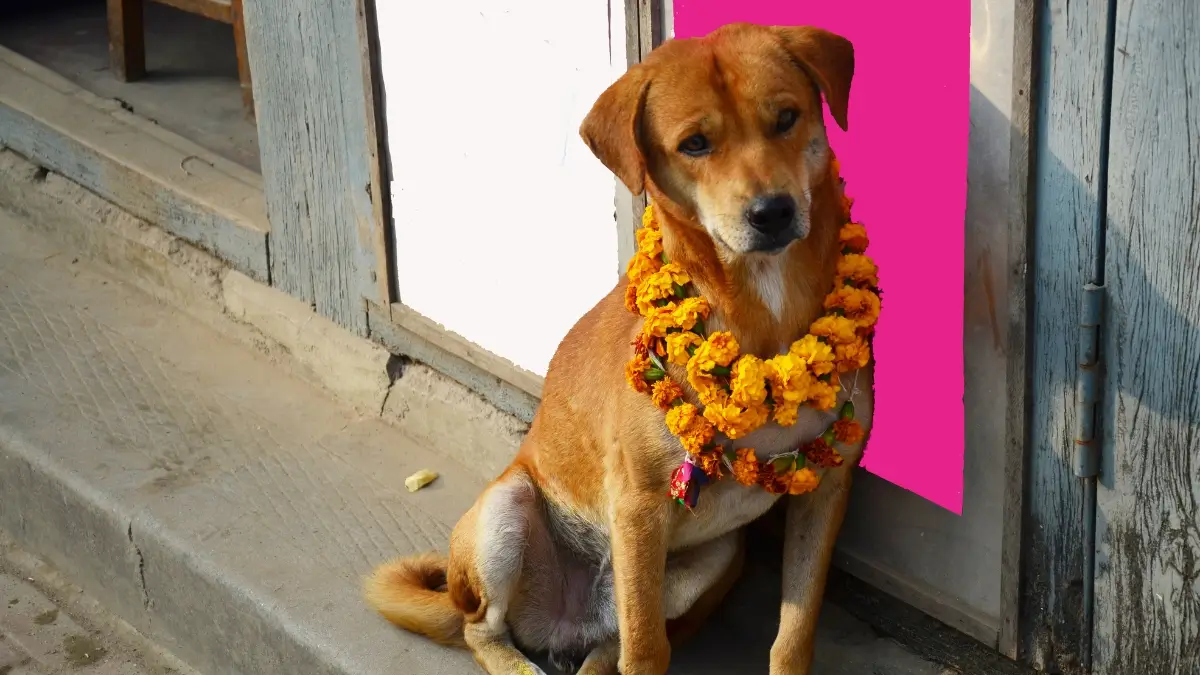
The second day is probably the most fun for tourists: Kukur Tihar, the day for dogs! Dogs get flower garlands, tika, and lots of tasty treats. In Hindu stories, dogs are Yama’s gatekeepers, so honoring them is thought to keep you safe.
Lots of travelers love this day and even join in decorating street dogs in Kathmandu, Pokhara, and Bhaktapur.
Day 3: Gai Tihar and Lakshmi Puja (Cow Worship and Goddess Laxmi)
On the third day, cows get special treatment with flower garlands and tika. Since cows are seen as symbols of wealth and motherhood, they’re really important in Nepali culture. In the evening, families do Lakshmi Puja by lighting diyos and oil lamps, making colorful rangoli at their doors, and offer sweets to welcome Goddess Laxmi. Whole neighborhoods shine with lights and marigold decorations, making it one of the coolest nights to see Tihar in Nepal.
Day 4: Goru Tihar and Govardhan Puja (Ox Worship & Mountain Symbolism)
The fourth day of Tihar is all about the Ox, since they’re super important for plowing fields. Families also celebrate Govardhan Puja by making little mounds of cow dung to represent Govardhan hill, remembering how Lord Krishna defeated Indra. In some places, people also do Mha Puja, where they honor their own bodies and souls. It’s a special Newar tradition that’s part of their New Year called Swanti.
Day 5: Bhai Tika (Brother-Sister Day)
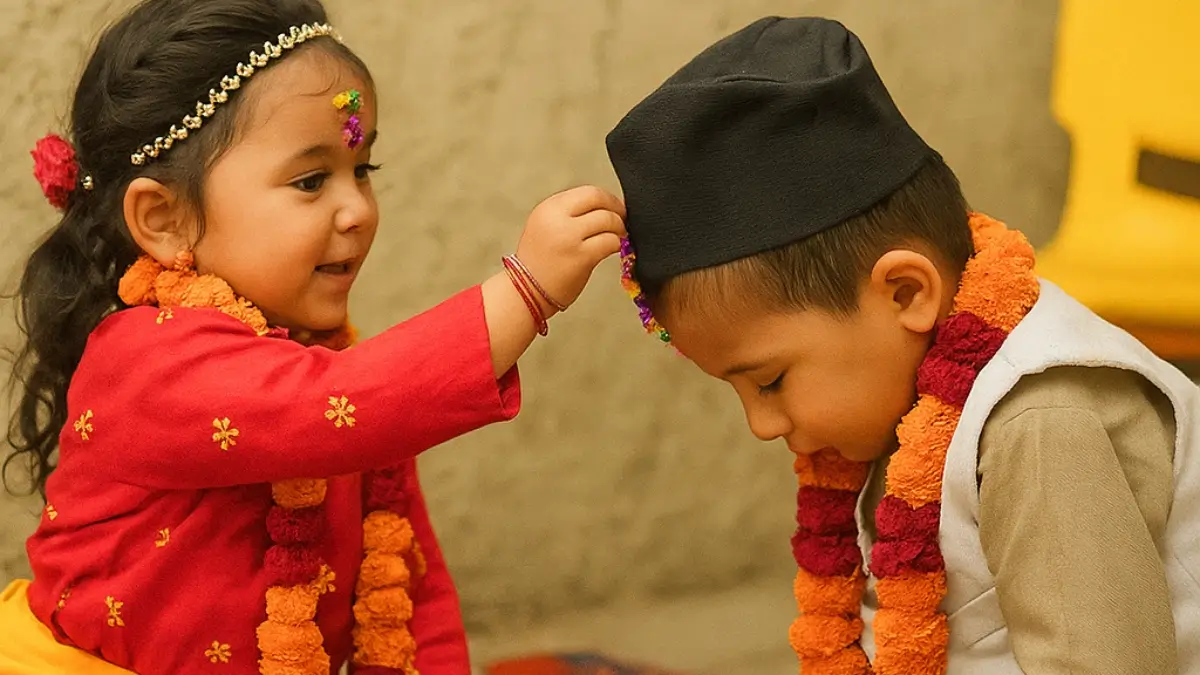
The last day of Tihar is Bhai Tika. Sisters put a special seven-colored tika on their brothers’ foreheads, give them sweets, offer fruits, and bless them with Makhamali flower garlands. Brothers in return give back gifts, which makes the bond between siblings even stronger.
Cultural Practices and Key Elements of Tihar
Besides all the rituals, Tihar is packed with cultural stuff that makes it totally Nepali.
Deusi and Bhailo Songs
Groups of kids and teens go from house to house singing Deusi and Bhailo songs. They usually dance, sing together, and play the madal drum. Families give them food, sel roti, or money, which makes the whole neighborhood feel lively and fun.
Decorations and Symbols
Tihar decorations make homes and streets in Nepal super colorful and lively. Families light diyos, hang marigold and makhamali garlands, and make bright rangoli designs. The glow from the lamps and flowers is so pretty that people often compare Tihar to Diwali in India.
Traditional Foods and Offerings
Tihar is also all about food! Families make sel roti, yomari, anarasa, sweets like laddu and peda, plus fruits and rice dishes. They share these treats with family, animals, and people who come to visit.
Mha Puja – Celebration of Self
For the Newar community, Tihar happens at the same time as Mha Puja and the start of the Nepal Sambat New Year. During Mha Puja, people focus on cleaning and taking care of themselves to stay healthy and lucky.
Regional Variations and Tihar Outside Nepal
Although Tihar is celebrated nationwide in Nepal, customs differ by region and community.
Kathmandu Valley
In Kathmandu, Bhaktapur, and Patan, Tihar is celebrated with big street decorations, huge Deusi Bhailo performances, and rangoli competitions. The city's celebrations are perfect for tourists to see and enjoy.
Pokhara and Terai Regions
In rural places like Pokhara and the Terai, Tihar keeps a strong farming vibe. People come together for Sakhiya dances, sing folk songs, and do traditional rituals to honor farm animals.
Ethnic Communities
- Newar: Celebrate Mha Puja and the Nepal Sambat New Year.
- Tharu: Perform Sakhiya dance and special local rituals.
- Maithil: Make fancy rangoli designs and worship household gods.
- Gurung: Mix their own folk traditions with regular Tihar celebrations.
Tihar Abroad
Nepali people living in countries like Australia and the USA also celebrate Tihar. They do Bhai Tika ceremonies even if online through video calls, sing Deusi Bhailo songs, and have gatherings locally even when far from home.
Tourism and Trekking During Tihar

If you’re visiting Nepal, Tihar is the perfect time to check out the festival. Kathmandu, Pokhara, Lalitpur, and Janakpur have glowing streets and tons of cultural events.
Trekking During Tihar
Many people book their treks to match the Tihar festival timing. Since the villages on the way are buzzing with celebration which gives a new cultural aspect to the trail. You can check out these options:
|
Duration |
Trek |
Highlights |
Why Good for Tihar? |
|---|---|---|---|
|
3–6 Days (Short Treks) |
Ghorepani – Poon Hill (4–5 days) |
Sunrise over Annapurna & Dhaulagiri, Gurung villages |
Quick trek, strong festive vibes in villages |
|
Mardi Himal (4–6 days) |
Close-up view of Machapuchare (Fishtail), peaceful trail |
Short, less crowded, local Tihar celebrations |
|
|
Helambu (5–6 days) |
Near Kathmandu, Buddhist culture |
Easy access, can be back home for Bhai Tika |
|
|
Gosaikunda (5–6 days) |
Sacred alpine lake, mountain views |
Spiritual + cultural, fits holiday week |
|
|
7–10 Days (Medium Treks) |
Langtang Valley (7–9 days) |
Tamang–Sherpa culture, glaciers, mountain scenery |
Moderate trek with festive immersion |
|
Annapurna Base Camp (ABC) (7–10 days) |
Iconic base camp, Annapurna Sanctuary |
Scenic + lively villages decorated for Tihar |
|
|
Khopra Ridge (8–9 days) |
Panoramic Annapurna–Dhaulagiri views |
Less crowded, authentic village Tihar |
|
|
12–18 Days (Long Treks) |
Everest Base Camp (EBC) (12–14 days) |
Everest views, Sherpa culture |
Clear skies, decorated Sherpa villages |
|
Manaslu Circuit (14–16 days) |
Remote, cultural diversity, high passes |
Off-the-beaten-path Tihar experience |
|
|
Upper Mustang (12–15 days) |
Tibetan plateau, desert-like scenery |
Unique culture, different festival feel |
|
|
Tsum Valley (14–16 days) |
Remote monasteries, Tibetan influence |
Spiritual + cultural depth, fewer crowds |
Each of these treks is a wonderful way to celebrate the spirit of Tihar while exploring Nepal’s breathtaking landscapes. If you are considering any of these journeys, Nepal Gateway Trekking can be the perfect companion to make your adventure safe, meaningful, and truly memorable
Is Tihar the same as Diwali?
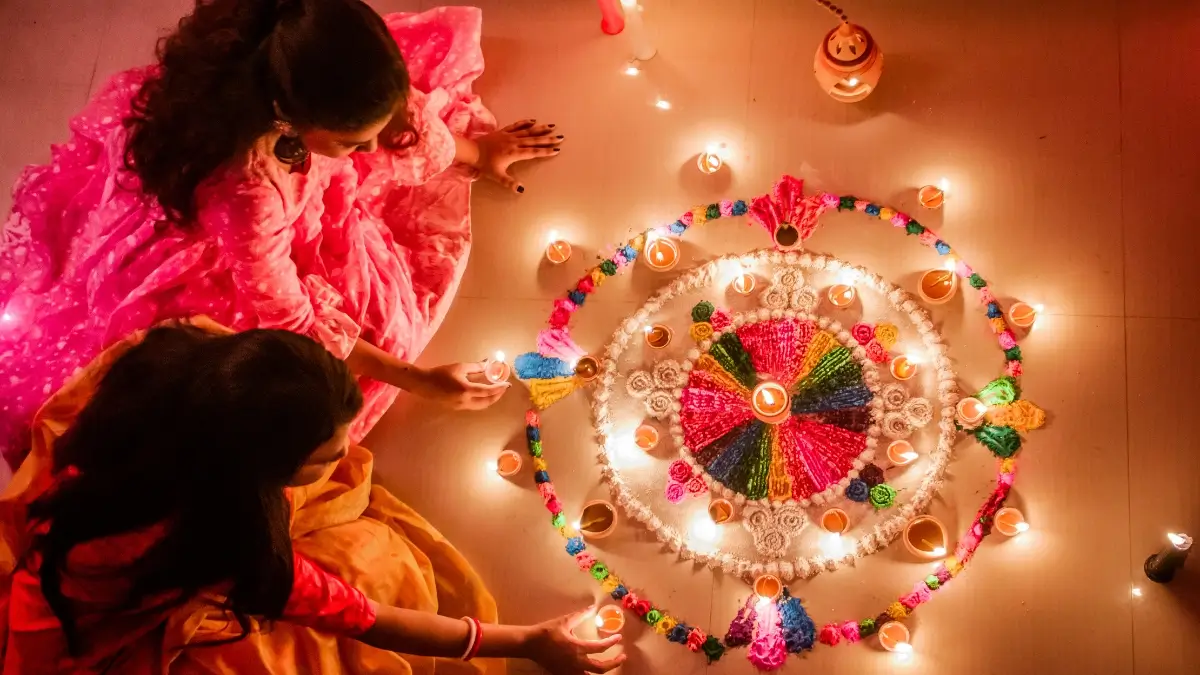
People often compare Tihar and Diwali because both are festivals of lights. But Tihar is special to Nepal, with traditions like Kukur Tihar, Kaag Tihar, and Bhai Tika. Diwali in India is mostly about Lord Rama coming back to Ayodhya and celebrating light winning over darkness, while Tihar focuses on keeping balance and harmony between animals, humans, and gods.
Interesting Facts About Tihar
- Tihar is Nepal’s second biggest festival after Dashain.
- It goes on for five days.
- Animals like crows, dogs, cows, and the Ox are worshipped.
- Homes are decorated with diyos, rangoli, and flowers.
- The Deusi–Bhailo tradition is unique to Nepal.
- Special foods like sel roti and anarasa are made for Tihar.
- For Newars, Mha Puja happens at the same time as the Nepal Sambat New Year.
- Bhai Tika uses a seven-colored tika, which stands for long life.
- The festival celebrates nature, animals, people, and gods together.
Scientific and Social Curiosities
Lots of Tihar rituals teach people to care for the environment, respect animals, and bring the community together. From feeding birds to lighting oil lamps, every action has both a meaning and a practical purpose
To Sum Up
Tihar isn’t just a festival, it’s a five-day adventure through Nepal’s culture, traditions, and community life. From celebrating dogs on Kukur Tihar to the emotional Bhai Tika sibling rituals, every day has its own special meaning. For travelers, it’s one of the best times to see Nepal, with cities and villages full of lights, flowers, music, and food.
If you’re visiting Nepal in 2025, try to plan your trip during Tihar to experience the festival of lights and flowers. Book your trek with Nepal Gateway Trekking, a trusted and licensed trekking agency in Nepal.
FAQs
What is Tihar?
Tihar is a five-day Hindu festival in Nepal that honors animals, celebrates siblings, and worships Goddess Laxmi.
Why is Tihar celebrated?
Tihar is celebrated to honor Yama, Goddess Laxmi, and strengthen family and community bonds.
How can tourists participate in Tihar celebrations?
Tourists can join Deusi Bhailo programs, witness Kukur Tihar, and experience Tihar decorations in Nepal.
What is the significance of Tihar?
Tihar is a celebration of harmony between nature, animals, humans, and gods.
What special foods are prepared for Tihar?
For Tihar, the special foods prepared are sel roti, yomari, anarasa, laddu, peda, fruits, and rice-based dishes.
What is Deusi–Bhailo?
Deusi-Bhailo is a tradition where groups sing and dance door-to-door, receiving gifts in return.
Do all communities celebrate Tihar the same way?
The essence is shared, but rituals differ among Newar, Tharu, Maithil, Gurung, and other groups.



